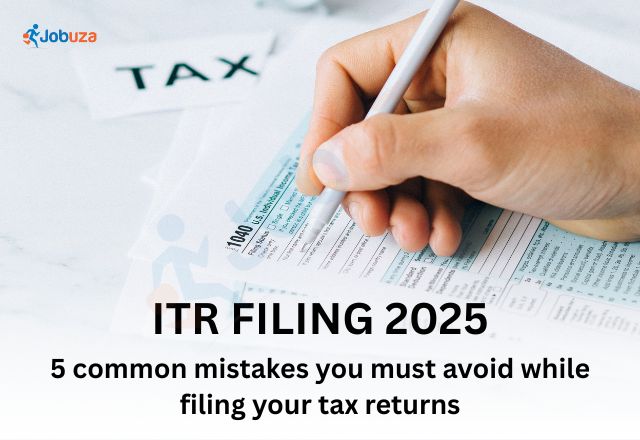ITR Filing 2025: 5 Common Mistakes to Avoid for a Hassle-Free Tax Return
ITR Filing 2025: Filing your Income Tax Return (ITR) accurately is more than just a financial obligation — it’s a smart way to avoid penalties, tax notices, and delays in refunds. As the assessment year 2025–26 begins, this is the perfect time to organize your financial documents such as salary slips, bank interest certificates, and investment proofs.
However, tax filing isn’t just about completing a form. Many taxpayers, even experienced ones, make small but costly mistakes. Here are the five most common errors you should steer clear of while filing your ITR this year:
1. Missing the ITR Deadline
The deadline to file your ITR for most salaried and individual taxpayers is July 31, 2025. Missing this date can result in a late filing fee of up to Rs 5,000, depending on how late you file. Additionally, you may lose the ability to carry forward certain losses or claim specific tax benefits. Timely filing also ensures a smoother refund process.
2. Choosing the Wrong ITR Form
Selecting the correct ITR form is crucial. Filing with the wrong form can delay processing or even result in your return being rejected.
-
If you are a salaried individual earning up to Rs 50 lakh without capital gains or foreign income, ITR-1 (Sahaj) is usually the right form.
-
If you have multiple properties, capital gains, or income from foreign assets, you will likely need ITR-2 or ITR-3 depending on your income sources.
Always verify the applicable form based on your income structure before filing.
3. Not Reporting All Sources of Income
Every source of income, however minor, needs to be reported. This includes:
-
Interest from savings accounts, fixed deposits, and recurring deposits
-
Dividend income
-
Rental income
-
Capital gains from stocks, mutual funds, or property sales
Even interest from dormant or less-used bank accounts must be disclosed. Omitting income, knowingly or unknowingly, can attract scrutiny and penalties from the Income Tax Department.
4. Ignoring Form 26AS and AIS Before Filing
Form 26AS and the Annual Information Statement (AIS) contain details of TDS (Tax Deducted at Source), advance tax payments, and high-value financial transactions. Comparing these with your ITR before submission is critical.
If there’s any mismatch — such as TDS not reflecting properly or a transaction you don’t recognize — get it resolved before filing. This verification step can save you from unnecessary delays or notices.
5. Failing to Verify Your ITR
Filing your return is not the final step — you must verify it within 30 days of submission. If not verified, the Income Tax Department will treat your ITR as invalid.
The fastest and easiest way to verify is online through Aadhaar OTP, net banking, or EVC (Electronic Verification Code). Skipping this step is one of the most common reasons for ITRs being considered incomplete.
Final Thoughts
Filing your ITR accurately and on time helps maintain a clean financial record and ensures quicker refunds. Avoiding these common mistakes can save you time, money, and potential legal issues.
If you’re unsure about any part of the process, consult a trusted tax advisor or use a government-approved e-filing platform. Being proactive now can help you avoid complications later.



